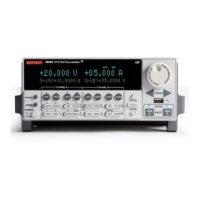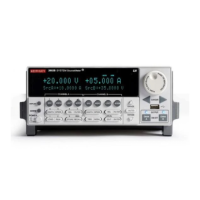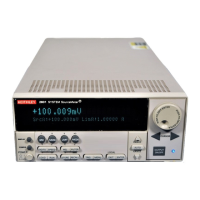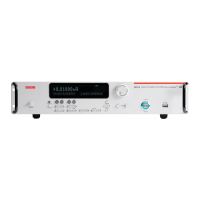7: TSP command reference Series 2600B System SourceMeter® Instrument
7-220 2600BS-901-01 Rev. B / May 2013
Details
This read-only attribute contains the source compliance state (true or false).
• true indicates that the limit function is in control of the source (source in compliance).
• false indicates that the source function is in control of the output (source not in compliance).
Writing to this attribute generates an error.
Reading this attribute also updates the status model and the front panel with generated compliance information.
See Current Limit (ILMT) shown in the status model diagram for the Measurement event registers (on page E-8
).
The Voltage Limit (VLMT) is not shown in the status model diagram for the Measurement event registers (on
page E-8), but is similar to the Current Limit (ILMT).
Example
compliance = smua.source.compliance
print(compliance)
Reads the source compliance state
for SMU channel A.
Output:
true
This output indicates that a
configured limit has been reached
(voltage, current, or power limit).
Also see
smuX.source.limitY (on page 7-223)
<sm.source.delay
This attribute contains the source delay.
Type TSP-Link accessible Affected by Where saved Default value
Instrument reset
Recall setup
Usage
sDelay = smuX.source.delay
smuX.source.delay = sDelay
Set to the source delay value (for example, to specify an additional 10 ms source
delay, set the value to 0.010)
Alternatively, you can set it one of the following values:
0 or smuX.DELAY_OFF: No delay
X
.DELAY_AUTO: Automatic delay value
Source-measure unit (SMU) channel (for example, smua.source.delay applies
to SMU channel A)
Details
This attribute allows for additional delay (settling time) after an output step. Set sDelay to a user-defined value
(in seconds). Alternatively, set sDelay to smuX.DELAY_OFF or smuX.DELAY_AUTO.
The smuX.DELAY_AUTO setting causes a range-dependent delay to be inserted when the source is changed.
Range-dependent delays are based on the output settling time values as defined in the Series 2600B
specifications.
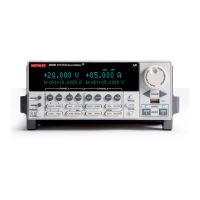
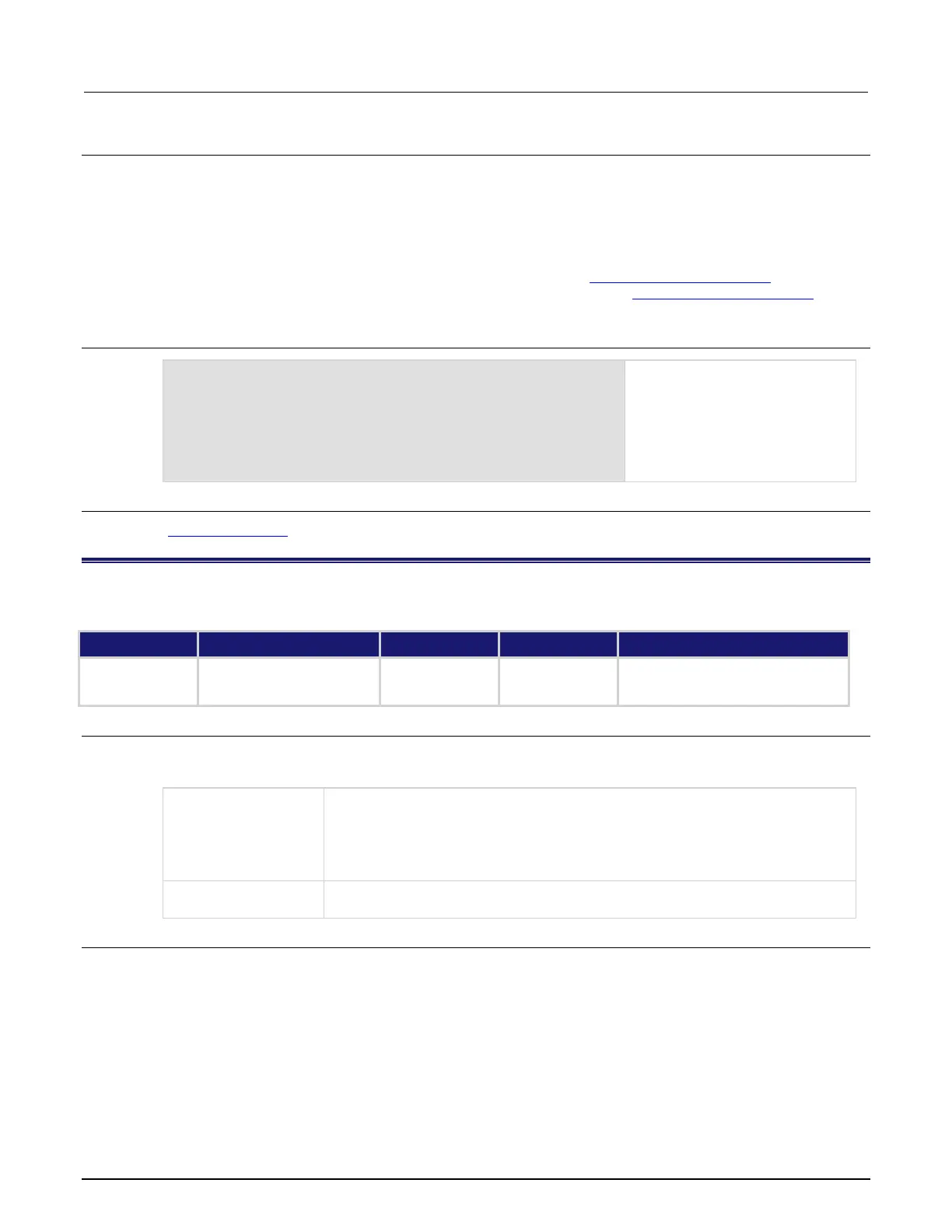